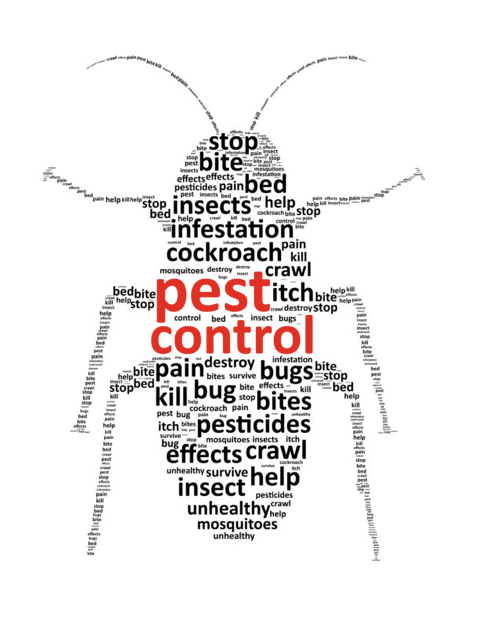Eco Bed Bug Exterminators Dc for Dummies
Eco Bed Bug Exterminators Dc for Dummies
Blog Article
The Best Strategy To Use For Eco Bed Bug Exterminators Dc
Table of ContentsSome Ideas on Eco Bed Bug Exterminators Dc You Need To KnowWhat Does Eco Bed Bug Exterminators Dc Mean?Not known Facts About Eco Bed Bug Exterminators DcNot known Facts About Eco Bed Bug Exterminators DcMore About Eco Bed Bug Exterminators Dc
Because pesticides are toxic, they are likewise possibly hazardous to people, animals, other organisms, and the setting. People that make use of chemicals or consistently come in call with them have to recognize the loved one toxicity, prospective health results, and preventative steps to reduce direct exposure to the products they make use of. Danger, or risk, of utilizing chemicals is the capacity for injury, or the level of danger included in making use of a pesticide under an offered set of conditions.
Applicators can minimize or nearly remove exposure-- and hence decrease danger-- by following the label instructions, using individual protective clothing and tools (PPE), and dealing with the chemical effectively. More than 95 percent of all chemical direct exposures come from facial direct exposure, mainly to the hands and forearms. By wearing a set of unlined, chemical-resistant gloves, this sort of direct exposure can be virtually eliminated.
The hazardous results that occur from a single exposure by any type of course of entrance are called "intense effects." The 4 paths of exposure are facial (skin), inhalation (lungs), oral (mouth), and the eyes. Acute poisoning is figured out by taking a look at the facial toxicity, inhalation poisoning, and dental toxicity of guinea pig.
The smart Trick of Eco Bed Bug Exterminators Dc That Nobody is Discussing
Severe toxicity is gauged as the amount or focus of a toxicant-- the a.i.-- called for to kill 50 percent of the animals in an examination population. This procedure is normally shared as the LD50 (deadly dose 50) or the LC50 (deadly concentration 50). Furthermore, the LD50 and LC50 worths are based on a single dosage and are tape-recorded in milligrams of pesticide per kilo of body weight (mg/kg) of the test animal or partially per million (ppm).
The lower the LD50 or LC50 value of a pesticide item, the greater its poisoning to human beings and animals. Pesticides with a high LD50 are the least hazardous to people if utilized according to the directions on the product tag. The persistent toxicity of a pesticide is identified by subjecting Website test animals to long-term direct exposure to the active component.
The persistent poisoning of a chemical is harder than intense toxicity to identify with laboratory analysis. Products are categorized on the basis of their loved one acute toxicity (their LD50 or LC50 worths). Pesticides that are categorized as extremely harmful (Toxicity Group I) on the basis of either oral, facial, or breathing toxicity must have the signal words DANGER and toxin published in red with a head and crossbones icon plainly showed on the front panel of the package tag.
The acute (solitary dose) oral LD50 for chemical items in this group varies from a trace total up to 50 mg/kg. For instance, exposure of a few drops of a product taken orally can be fatal to a 150-pound person. Some chemical products have just the signal word DANGER, which tells you absolutely nothing concerning the acute toxicity, just that the product can cause severe eye damages or extreme skin inflammation
How Eco Bed Bug Exterminators Dc can Save You Time, Stress, and Money.
In this category, the severe oral LD50 ranges from 50 to 500 mg/kg. A tsp to an ounce of this product might be deadly to a 150-pound person (exterminator). Pesticide products identified as either somewhat hazardous or relatively safe (Poisoning Classifications III and IV) are called for to have the signal word care on the chemical label

All pesticide toxicity chemical, including the LD50, can be found on the product's Material Safety Data Safety and security (MSDS). Chemical tags and MSDS can be obtained from sellers or manufactures - https://christophersavage.bandcamp.com/album/eco-bed-bug-exterminators-dc. The symptoms of chemical poisoning can range from a moderate skin irritability to coma or even death.
Due to the fact that of possible wellness issues, pesticide customers and handlers have to acknowledge the common indications and symptoms of pesticide poisoning. The results, or signs and symptoms, of pesticide poisoning can be generally specified as either topical or systemic.
The 9-Second Trick For Eco Bed Bug Exterminators Dc
Dermatitis, or inflammation of the skin, is accepted as one of the most frequently reported topical effect linked with chemical exposure. Signs of dermatitis array from reddening of the skin to rashes and/or sores. Some people tend to cough, wheeze, or sneeze when subjected to chemical sprays. Some people respond to the solid odor and bothersome impacts of petroleum extracts utilized as carriers in chemical products.
This sign usually subsides within a couple of mins after an individual is eliminated from the exposure to the irritant. A reaction to a pesticide product that triggers a person not only to sneeze and cough yet additionally to develop serious acute respiratory system signs and symptoms is a lot more most likely to be a real hypersensitivity or sensitive response.
Systemic impacts are fairly various from topical impacts. They frequently take place away from the original point of get in touch with as a result of the chemical being soaked up into and distributed throughout the body. Systemic results commonly consist of nausea or vomiting, throwing up, fatigue, frustration, and digestive problems. In advanced poisoning cases, the individual might experience adjustments in heart rate, problem breathing, convulsions, and coma, which can lead to fatality.
Report this page